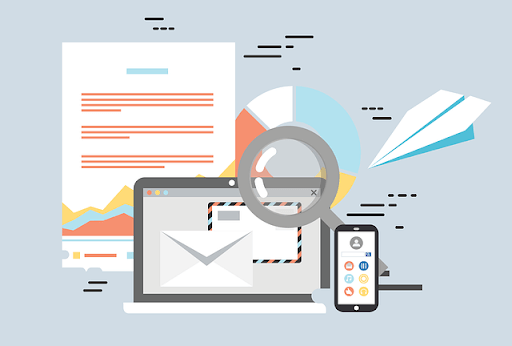Crafting the perfect cold email can be all you need to turn prospects into high-quality clients. This article unpacks the art of personalising your outreach, ensuring your messages land in the right inbox and strike a chord with the people behind the screen.
From highlighting your expertise to aligning with your potential client’s goals and challenges, we’ll walk you through a step-by-step strategy to make your cold emails feel anything but cold.
Whether you’re an established business or just starting out, these practical tips will help you cut through the noise, showcase your value, and build relationships that matter. Let’s dive in and transform those cold emails into conversations that convert.
Understanding Your Target Audience for Your Services
Getting the attention of high-quality clients starts with knowing who you’re talking to. Before kickstarting your cold email outreach, take a moment to really understand the people behind the businesses you’re reaching out to.
What problems are they trying to solve? Maybe their website isn’t getting enough visitors, or perhaps they’re not showing up high enough on search engine results pages.
Your job is to figure out these details because when you do, your emails can go from cold to warm by addressing their specific needs.
Why Knowing Your Audience Matters
Think about it: if someone sent you an email that clearly showed they understand your daily struggles, wouldn’t you be more inclined to listen? That’s the power of doing your homework.
For businesses looking to bring in more clients, this means digging into what makes each potential client tick. Are they a small local business trying to attract more foot traffic, or an online shop aiming to boost its online visibility?
Understanding these key details can make your cold emails feel less like a shot in the dark and more like a helping hand reaching out.
Breaking Down Your Audience
Not everyone will need the same help from you, and that’s okay. In fact, it’s an opportunity. By splitting your potential clients into different groups—say, by the size of their business, their industry, or what kind of help they need—you can customise your emails to speak directly to what matters to them. This isn’t about sending out a bunch of different emails just for the sake of it.
It’s about making each recipient feel like you’re talking right to them, offering insights and solutions tailored to their situation.
Crafting the Perfect Cold Emailing Strategy
Crafting effective cold email strategies is a vital step for any business looking to attract high-quality clients. This strategy needs to strike the perfect balance between professionalism and a personal touch, ensuring that each email feels like it was written specifically for the recipient rather than a one-size-fits-all message.
Here’s how you can use insights from your audience research to inform your cold email content and make your outreach efforts more successful.
Start With Your Audience Research
The first step in crafting the perfect cold emailing strategy is to lean heavily on the insights you’ve gathered from your audience research. Understanding your target market’s specific needs, challenges, and business goals allows you to tailor your emails in a way that speaks directly to them. For example, you can use the SEO Keyword Explorer for a client needing help with their SEO. Keyword research and analysis of the intent behind them support this kind of action.
Personalisation is Key
The essence of a successful cold email lies in its personalisation. This goes beyond just using the recipient’s or company’s name in the email.
Personalisation means referencing specific details about the recipient’s business or industry, showing that you’ve taken the time to understand their unique situation.
Mentioning a recent blog post they’ve published or commenting on changes in their industry shows that you’re engaged and informed, making your email stand out from the countless others they receive.
Crafting the Subject Line and Email Content
Subject line optimisation is your first, and sometimes only, opportunity to capture the recipient’s attention. It should be compelling, personalised, and give a hint about the value you’re offering.
Phrases like “Quick Tip for Boosting Your [Their Industry] Site’s SEO” or “How [Recipient’s Company] Can Improve Its Online Visibility” can pique interest and encourage opens.
When it comes to the email content, start with a brief introduction of yourself and your business, focusing on the value you can bring to their business.
Use simple, natural language to explain how your services can help them achieve their goals, such as increasing organic traffic or generating more leads. Offering something of immediate value, like a free audit, can also be a powerful incentive for them to engage further.
Closing with a Clear Call to Action
End your email with a clear, concise call to action. Whether it’s inviting them to reply to your email, scheduling a brief call, or directing them to a landing page for more information, make sure it’s easy for them to take the next step.
Remember, the goal of your cold email isn’t necessarily to close a sale on the spot but to start a conversation that could lead to a fruitful client relationship.
The Anatomy of a Personalised Cold Email

Let’s break down the anatomy of a personalised cold email that can help your business catch the eye of high-quality clients. Cold emails don’t have to be stiff or formal; in fact, they work best when they feel like a casual chat between professionals.
Here’s how to craft an email that feels personal and packs a punch, using the essential components: the subject line, opening line, body, and CTA.
The Subject Line
The subject line is like the headline of your email. It’s what gets your foot in the door, so make it catchy, personalised, and relevant to the recipient.
Instead of a generic “Looking for [your business’s services]?”, try something that speaks directly to their needs or situation, like “Boost Your [Industry] Site’s Traffic in 3 Steps”. This shows you’ve done your homework and you’re not sending the same email to a hundred different companies.
Opening Line
Your opening line is where the personalisation really kicks in. Comment on a recent achievement of their business or mention a mutual connection if you have one.
Something like “Congrats on being named [Award], that’s huge for the [Industry] industry!” feels personal and shows you’re interested in them, not just selling your services.
The Body
This is where you get into the meat of what you offer, but keep it concise and focused on how you can solve their specific problems. Talk about how your business’ expertise has helped businesses like theirs increase organic traffic or improve search engine rankings.
Mention a couple of key services, but keep the jargon to a minimum. Including a brief, specific example of your success with another client can be very persuasive.
CTA
End with a call-to-action (CTA) that makes it easy for them to take the next step. Whether it’s replying to your email, scheduling a brief call, or checking out a guest post on your blog, your CTA should be clear and simple.
Something like “Would love to chat more about your goals—how does your calendar look next week?” is direct and suggests a casual, no-pressure conversation.
How to Personalise Cold Emails to Land High-Quality Clients
Personalising cold emails is the golden key to unlocking the door to high-quality clients. It’s not just about sprinkling the recipient’s name throughout your message.
True personalisation touches on recognising their achievements, understanding their challenges, and providing tailored advice. This approach shows you’re not just after any client—you’re after the right fit. Here’s how you can elevate your cold emailing strategy to land those coveted clients.
Beyond the Name: Deep Personalisation
First off, deep personalisation involves acknowledging the recipient’s recent work or accomplishments. Did they just launch a new product, or were they mentioned in a notable publication? Mentioning these specifics shows that you’re paying attention and value what they do. It also creates an immediate connection, as you’re engaging with their world, not just pushing your services.
Next, tackle their challenges head-on. If you’ve noticed they’re lagging behind in their branding, online visibility, messaging, etc. — bring it up. But don’t stop there—offer a glimpse into how you could help them overcome these hurdles.
For instance, suggest that a targeted strategy could improve the issues you’ve addressed or that a particular approach to content marketing might drive more traffic to their site.Offering bespoke insights based on your expertise can really set your cold emails apart. Share a quick tip or insight related to their business that they might not have considered, like the potential of local SEO to attract nearby customers. These personalised tidbits of advice demonstrate your knowledge and willingness to provide value from the get-go.
Personalising at Scale with Email Tools and Data Analytics
Of course, personalising each email can be time-consuming, especially when you’re reaching out to dozens, if not hundreds, of potential clients. This is where these software and marketing analytics tools come into play. These technologies can help you personalise at scale by tracking interactions, segmenting your target audience based on specific criteria, and even predicting which clients are more likely to respond positively to certain types of messaging.
For instance, you might use data analytics to identify a segment of potential clients who have shown an interest in improving their organic traffic. You can then tailor your cold emails to this group with insights and offers specifically related to boosting organic reach, using templates that allow for personalising key details.
These tools can also help you keep track of previous interactions, ensuring that your follow-up emails build on earlier conversations and continue to address the recipient’s evolving needs.
Demonstrating Value in Your Services Through Cold Emails
In your cold emails, the key to converting prospects into clients is not just to inform them about your services but to make them see the undeniable value these services can bring to their business. This isn’t just about stating what you do; it’s about painting a picture of the brighter future they could have by partnering with you. Here’s how you can demonstrate the value of your services through cold emails in a way that resonates with your recipients’ goals.
Connect Your Services to Their Goals
Start by articulating how your services directly contribute to achieving the recipient’s specific business objectives. For instance, if increasing traffic to their site is their goal, explain how your services and strategies have a proven track record of driving more qualified leads to your clients’ websites.
Use language that links your services to tangible outcomes, such as “Our [service] approach can elevate your site’s visibility on Google, leading to a 20% increase in organic traffic within the first three months.”
Share Success Stories and Testimonials
Nothing speaks louder than success. Include brief case studies, success stories, or video testimonials from past clients within your emails to showcase real-world examples of how your services have led to significant improvements.
For example, mention a client who achieved first-page rankings for their target keywords or experienced a noticeable jump in website traffic and conversions as a result of your SEO efforts. This demonstrates your capability and builds trust with potential clients by showing them what they can expect.
Make It Relevant
Tailor these examples to match the recipient’s industry or size. If you’re reaching out to a local business, highlight your success in enhancing local SEO for similar businesses, leading to increased foot traffic and higher local search rankings.
For larger businesses, focus on your ability to scale strategies to drive competitive advantage and substantial growth in online visibility.
Offer a Taste of Your Expertise
Consider including a free audit or analysis as part of your value proposition, incorporating innovation management techniques to enhance this offering. This offer provides immediate value to the recipient and a practical demonstration of your expertise and the potential benefits of your services. It’s a tangible way to start a conversation around their specific needs and how you can help address them.
When you craft your cold emails with a focus on demonstrating value, you do more than just sell your services; you start a conversation about the future. By effectively showcasing how your expertise has helped others and how it can help the recipient achieve their goals, you position yourself as a valuable partner rather than just another service provider. This approach helps build credibility and trust from the initial point of contact.
Follow-Up Strategies Without Sounding Salesy
Follow-up emails are a delicate art, where building trust and establishing expertise is paramount. Your follow-up strategy should nurture the relationship, keeping the conversation going without pushing too hard.
Here’s how you can follow up in a way that keeps potential clients engaged and interested, without coming off as too salesy.
The Art of Timing and Frequency
The timing of your follow-up emails is crucial. Wait too long, and your initial email might be forgotten; too soon, and you risk seeming pushy.
A good rule of thumb is to send your first follow-up email about three to five days after your initial cold email. This gives your potential clients enough time to have seen your first email but is not so long that they’ve completely moved on.
For subsequent follow-ups, extend the interval between each email. The second follow-up could be a week after the first and the third two weeks after the second. This pattern respects the recipient’s space and time, reducing the risk of overwhelming them and improving your sales performance.
Keeping Interest and Engagement High
Your follow-up emails should offer new value in each message. This could be in the form of a blog post relevant to their business challenges, a case study highlighting success stories in their industry, or even a simple tip that could improve their current marketing efforts.
The key is to provide content that enriches their knowledge or helps solve a problem, rather than simply asking for a response.
Personalisation Continues in Follow-Ups
Just like your initial cold email, personalisation is crucial in your follow-ups. Reference any previous communications and build on them.
If in your first email you offered a free audit and they haven’t responded, your follow-up could include a specific insight you’ve noticed about their business or a recent achievement of theirs you came across. This shows you’re not just following a script but are genuinely interested in their success.
Gentle Reminders Over Hard Sells
Instead of directly asking for a meeting or a call in every follow-up, frame your CTA as a gentle reminder or an offer of additional value. For example, “I thought you might find this case study interesting, given your goal to improve [specific goal]. It’s a quick read and might offer some insights into our approach.” This way, you’re nudging them towards engagement without the pressure of a sales pitch.
The Sign-Off: Keep the Door Open
End your follow-up emails on a positive note, making it clear that you’re available and happy to help whenever they’re ready.
A simple sign-off like, “Whenever you’re ready to discuss how we can boost your [service], I’m here. No rush, just wanted to make sure you have all the resources you need,” sets a friendly, no-pressure tone.
Wrapping Up
Personalising cold emails to land high-quality clients is an art that combines understanding your audience, articulating your value, and maintaining engagement without being overbearing.
From crafting that initial email that speaks directly to your potential client’s needs and goals to following up in a way that adds value without the hard sell, each step is crucial in the journey to convert prospects into clients.
To truly excel, keep refining your approach based on the responses you get and the shifts in the digital marketing landscape. Stay updated on the latest trends, and always look for ways to enhance the personal touch in your communications.
With persistence, a focus on adding value, and a commitment to personalisation, your cold email campaign can become a powerful tool in securing high-quality clients, setting the stage for long-term success and growth.




